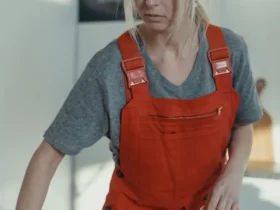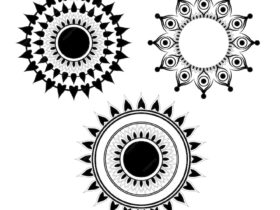In this comprehensive guide, we’ll delve into the fascinating world of CNC sign making and CNC router signs. Whether you’re a beginner looking to start your journey or an experienced enthusiast seeking advanced techniques, this guide has something for everyone. Let’s dive right in!
What is CNC Sign Making?
CNC (Computer Numerical Control) sign making involves using automated machinery to create precise and intricate signs. These machines use computer-aided design (CAD) software to convert digital designs into physical objects. CNC sign making has revolutionized the signage industry, allowing for highly detailed and customized signs with unparalleled accuracy.
Benefits of CNC Sign Making
- Precision: CNC machines can achieve incredibly precise cuts and engravings, ensuring high-quality results every time.
- Versatility: From wood and plastic to metal and foam, CNC machines can work with a wide range of materials, making them versatile for various sign-making projects.
- Efficiency: Automated processes reduce manual labor and speed up production, making CNC sign making a cost-effective option.
- Customization: With CAD software, you can create custom designs and replicate them accurately, giving you endless creative possibilities.
- Consistency: CNC machines ensure consistency across multiple copies of the same design, maintaining brand identity and quality standards.
Getting Started with CNC Sign Making
1. Choose the Right CNC Machine
There are different types of CNC machines, including routers, mills, and laser cutters. For sign making, CNC routers are the most commonly used due to their versatility and precision. Consider factors such as bed size, spindle power, and compatibility with materials when choosing a CNC router for sign making.
2. Design Your Sign
Use CAD software to design your sign. Start by creating a digital mockup, specifying dimensions, text, graphics, and any special effects like 3D carving or v-carving. Ensure your design is optimized for CNC machining, with clear toolpaths and appropriate tool settings.
3. Material Selection
Choose the right material for your sign based on its intended use, location, and durability requirements. Common materials for CNC signs include wood, acrylic, PVC, aluminum, and foam board. Ensure the material is flat, clean, and securely fastened to the CNC machine’s bed.
4. Toolpath Setup
Generate toolpaths in your CAD software based on the chosen material and cutting/engraving tools. Consider factors like feed rates, spindle speed, depth of cut, and tool changes. Simulate the toolpaths to check for any errors or collisions before running the job on the CNC machine.
CNC Router Signs: Techniques and Tips
1. V-Carving
V-carving creates decorative and dimensional effects by varying the depth of cuts. Use V-bit tools with different angles to achieve intricate designs and texturing effects on your signs. Experiment with different depths and toolpaths to create unique visual elements.
2. 3D Carving
For more complex and detailed signs, consider 3D carving techniques. Use specialized software to convert 2D designs into 3D models, then use ball-nose or tapered end mills to carve the designs into the material. Adjusting the toolpath parameters can enhance the depth and definition of your 3D carvings.
3. Inlay Work
Create eye-catching inlay designs by combining different materials or colors within a single sign. CNC routers can accurately cut out shapes and grooves for inlay pieces, allowing for seamless integration of contrasting elements like wood and acrylic or different wood species.
4. Finishing Touches
After machining, apply finishing techniques to enhance the appearance and durability of your CNC router signs. Sanding, painting, staining, and varnishing are common finishing methods. Consider adding protective coatings for outdoor signs to withstand weathering and UV exposure.
Maintenance and Safety Tips
1. Machine Maintenance
Regularly clean and lubricate your CNC machine to ensure smooth operation and prolong its lifespan. Check and replace worn-out or damaged cutting tools, belts, and bearings. Calibrate the machine regularly for accuracy and performance consistency.
2. Safety Precautions
Prioritize safety when operating CNC machines. Wear appropriate personal protective equipment (PPE) such as safety glasses, gloves, and hearing protection. Keep work areas well-ventilated and free from clutter. Follow manufacturer guidelines and safety protocols for tool changes, spindle speed, and machine adjustments.
Conclusion
CNC sign making and CNC router signs offer unparalleled precision, versatility, and customization in the signage industry. By understanding the fundamentals, techniques, and safety aspects of CNC machining, you can create stunning and durable signs for various applications. Whether you’re a hobbyist or a professional sign maker, harnessing the power of CNC technology opens up a world of creative possibilities. Start your CNC sign making journey today and unlock your imagination!












